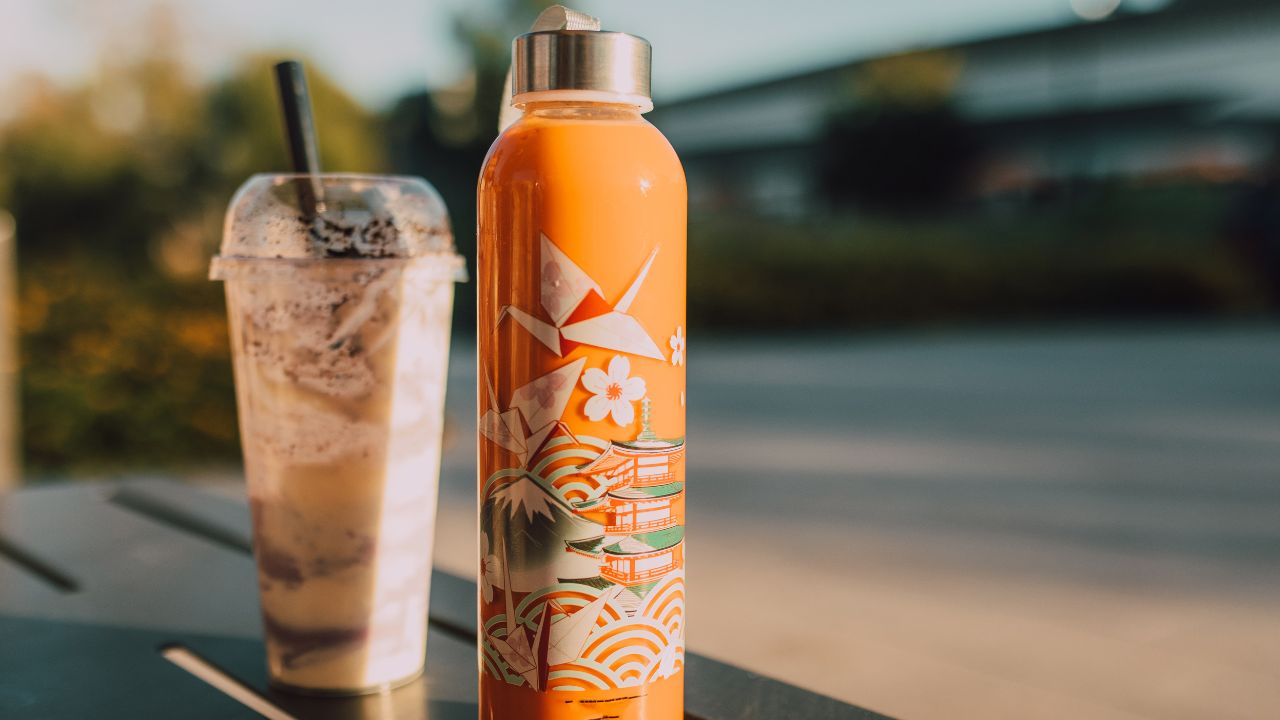Frida is a woman with a love of all things technological and decorative. She spends her days finding new ways to merge the two worlds together, and has made a name for herself in the process. Her work has caught the eye of many in the tech industry, and she is often consulted for her expertise. Darlene also enjoys spending time with her family and friends, and loves to decorate her home in her free time.

People grab water bottles every day during their gym sessions, office work, or while walking. Have you ever wondered what elements transform your favorite water bottle from an ordinary to a delightful drinking experience? It’s all about design.
The design team puts meticulous thought into the bottle shape, as well as color selection and handling experience. A well-designed custom stainless steel water bottle transitions from basic functionality to functional utility, also expressing individuality. The design process during custom water bottle manufacturing is of great importance because it establishes the defining elements.
This discussion will explain how design plays a vital role in bulk stainless steel water bottles manufacturing by analyzing its impact across different critical areas.
Why Is Design So Essential In Custom Water Bottle Manufacturing?
1. First Impressions: The Power of Visual Appeal
When you go to buy a water bottle. What catches your eye first? The color, the logo, maybe the unique shape? The initial impression comes from design elements. A well-designed bottle creates an immediate visual impact that attracts viewers while stimulating their interest. Businesses receive a perfect chance to display their brand identity through this opportunity. A custom water bottle achieves memorable branding status through its combination of colors, shapes, and graphics.
2. Functionality: Beyond Looks
A beautiful bottle is useless if it’s awkward to use. Design directly affects how the bottle works in everyday life:
- Grip and Comfort: Is it easy to hold, even when you’re on the move?
- Ease of Use: Can you open it with one hand? Does it fit in your car’s cup holder or backpack pocket?
- Material: Is it food-grade quality, and will it last longer?
- Leak-Proofing: Does the cap seal tightly to prevent spills?
Designers establish all these features throughout the design phase. Custom stainless steel bottles that feature well-designed elements make hydration both effortless and enjoyable for users.
3. Material Matters: Safety and Sustainability
Material selection stands as one of the critical design choices. The use of high-grade stainless steel, such as 18/8, 304, or 316, guarantees durability, corrosion resistance, and safety performance for its applications. The selected material has to fulfill food-grade specifications. It should prevent all harmful chemicals, such as BPA, while adhering to rigorous safety guidelines.
Designers need to maintain a balance between product costs and safety features, and environmental responsibility. People prefer environmentally friendly materials along with reusable designs because sustainability has become a major consumer demand in recent years.
4. Personalization: Making It Yours
Companies can personalize their water bottles through customization options. Some methods include laser engraving, vinyl wrapping, hydro dipping, and UV printing. It allows for unique logos, colors, and finishes. Additionally, it enhances brand recognition and consumer appeal. During the design process, manufacturers can add names along with logos and favorite quotes, as well as unique patterns. The personal touch transforms a regular bottle into a special object through which people are more likely to carry water every day. Brands gain increased customer exposure together with enhanced brand-customer relationships through this approach.
5. Innovation: Meeting Modern Needs
Design isn’t just about tradition- it’s about innovation. Today’s water bottles can include features like:
- Built-in filters
- Temperature indicators
- App connectivity to track hydration
These innovations are only possible through creative and forward-thinking design. They solve real problems and make bottles more useful in today’s fast-paced world.
6. Cost and Production Efficiency
While creativity is vital, practical concerns matter too. The production cost and manufacturing difficulty increase when design complexity exceeds reasonable limits. Quality production, efficiency, and uniqueness represent the optimal design criteria for stainless steel water bottles that manufacturers need to meet.
7. Regulations and Safety Standards
All water bottles need to provide safety to users, with special attention given to child users. Designers need to guarantee their products fulfill all health and safety requirements, which span across material security and labeling standards. Failure to follow these standards can trigger product recalls and legal problems, which makes compliance an essential step during design phases.
Design Trends: What’s Popular Now?
Modern stainless steel water bottle patterns mirror the cultural developments within our society. Modern design trends emphasize simple designs using strong colors alongside environmentally sustainable materials. Personalization remains popular, as does the integration of smart technology. Human-centered design, making bottles easier and more comfortable to use, is also a growing trend.
Final Thoughts
The manufacturing process of custom stainless steel water bottles extends far beyond surface decoration. The goal of design involves developing products that combine beauty with practicality alongside safety and sustainability. A well-designed product transforms basic items into meaningful objects through the power of design. A bottle designed for daily use stands apart from a bottle left to remain on store shelves. In the end, design is what makes every sip count.
